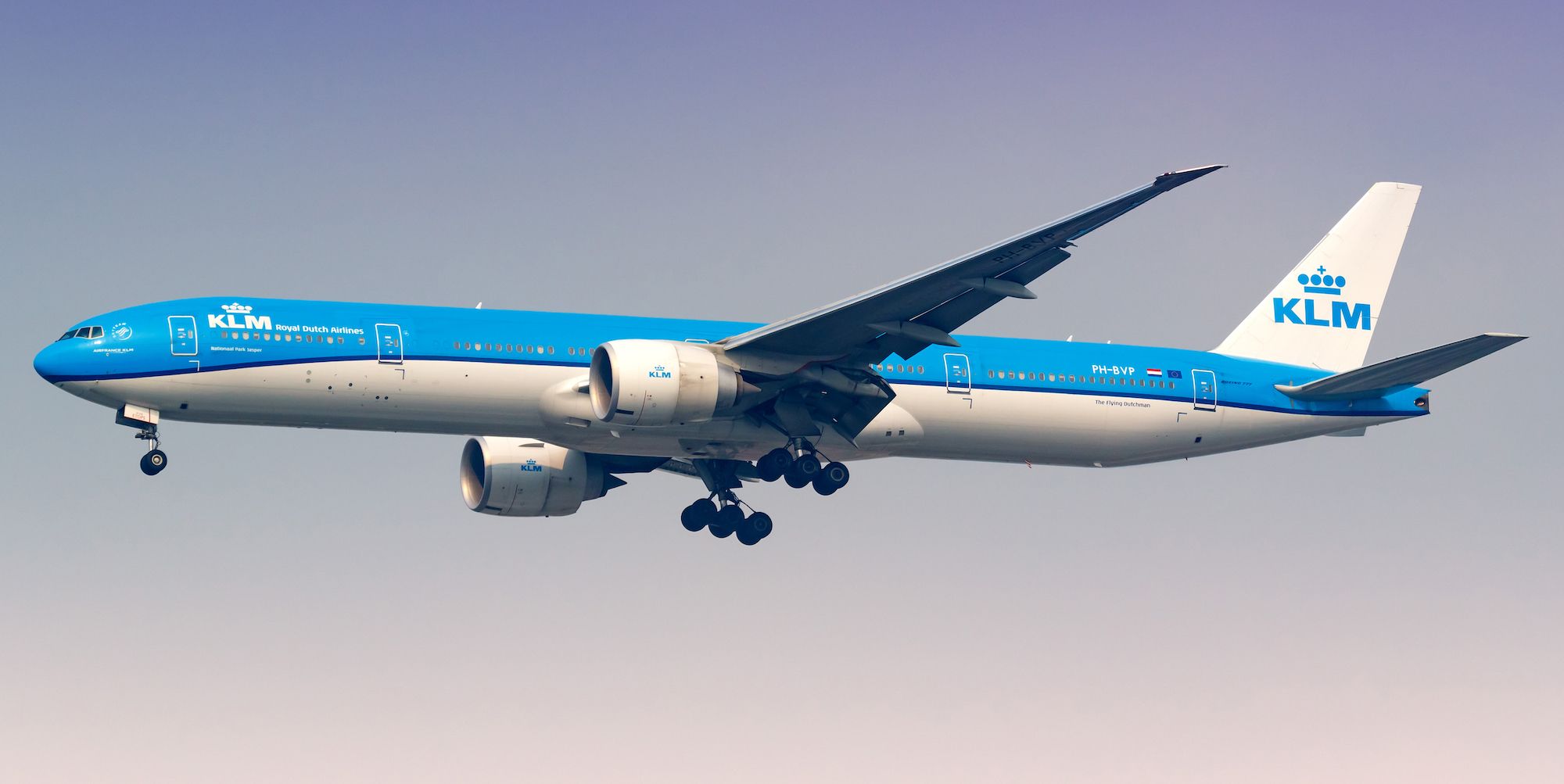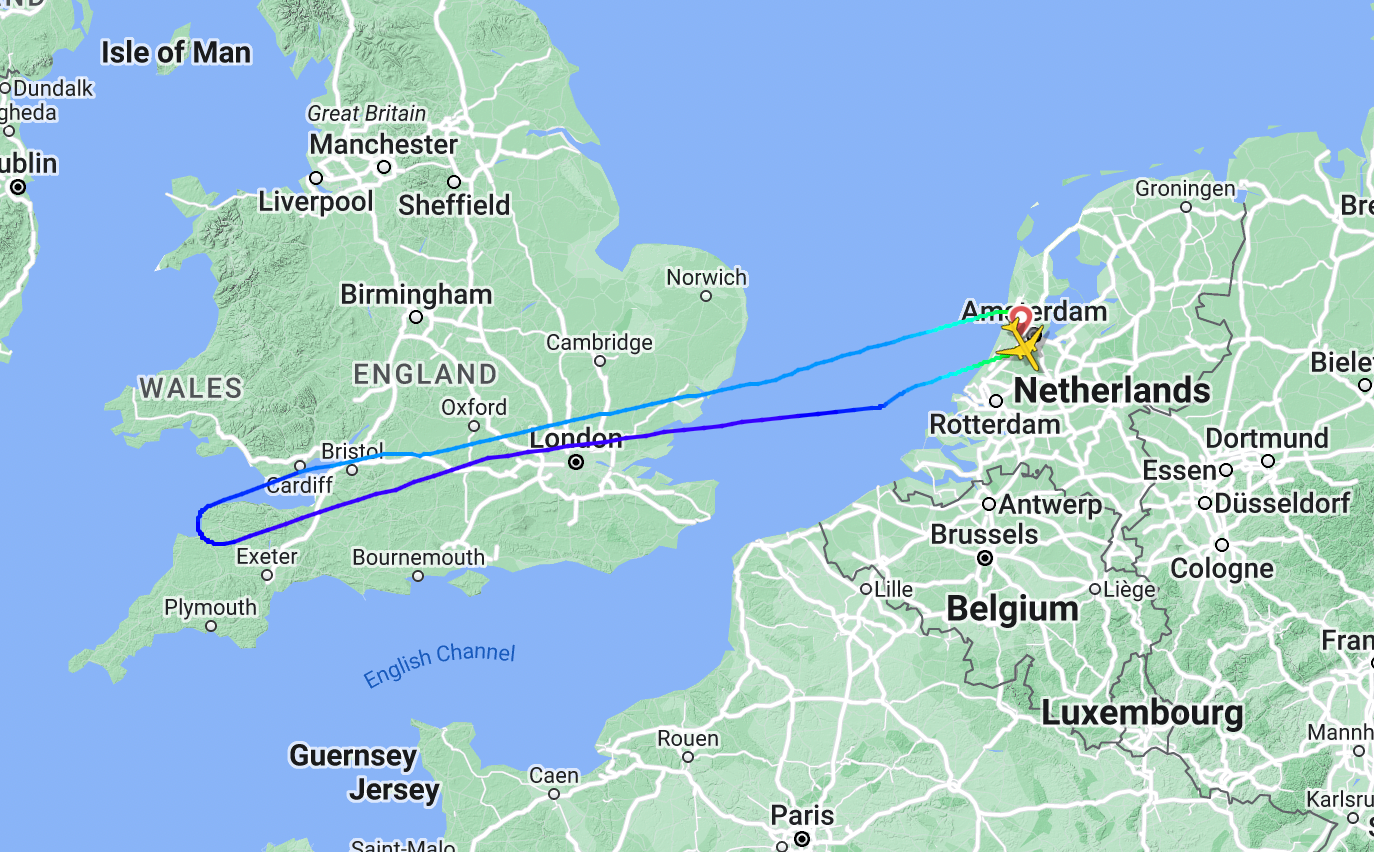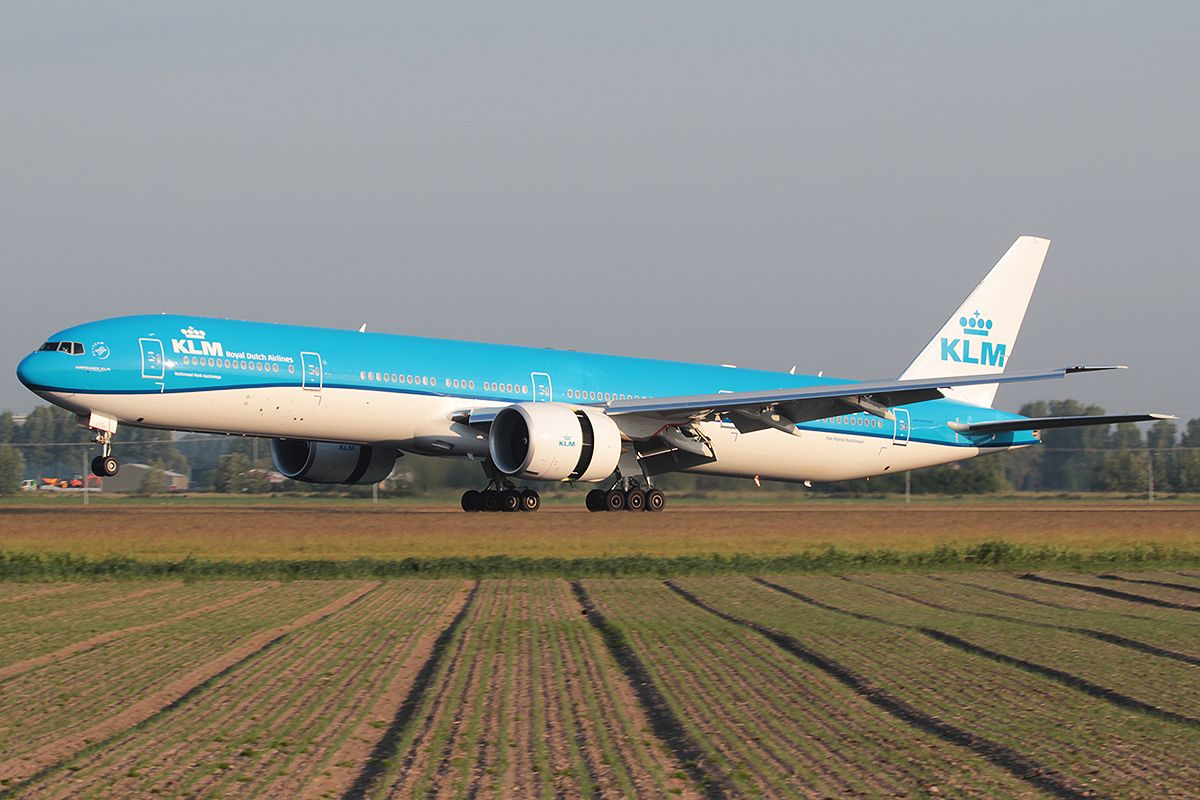On May 9th, a Boeing 777-300ER operated by KLM had taken off from Amsterdam Schiphol for São Paulo when an engine failure was experienced about an hour after takeoff. The aircraft turned around in the area above Wales and returned to Amsterdam. It remains on the ground more than a day since the incident occurred.
Incident details
On Tuesday, May 9th, a Boeing 777-300ER registered PH-BVR had been tasked with operating flight KL791 from Amsterdam to São Paulo. As per data from FlightRadar24.com, the KLM aircraft departed Amsterdam's Schiphol airport at 13:17 local time - nearly 30 minutes after its scheduled departure time of 12:50.
According to The Aviation Herald, the aircraft was performing its initial climb out of Amsterdam's runway 24 when the left-hand engine, a General Electric GE90, began to vibrate. However, as these vibrations remained within "acceptable ranges," the crew continued the climb to cruising altitude. The jet was enroute at an altitude of FL300, about 310nm westsouthwest of Amsterdam, in English Airspace, when a failure of the aircraft's number one engine occurred, prompting a diversion and the decision to return to Amsterdam. Referencing a map, this incident would have occurred somewhere above Swindon or Bristol.
Flying over the Bristol Channel and making its turn over the North Devon Coast, the crew lowered the aircraft to FL170 for the remainder of its flight to Amsterdam. A safe landing on runway 18C took place at 15:12, approximately two hours after departure.
It's interesting that the aircraft flew across the English Channel and returned to Amsterdam with one engine 'out' rather than divert to a closer airport, such as one of the several suitable facilities in the London area. As a commenter noted on a similar Air France incident over London, flying further would have been acceptable as home base was still relatively close by. Additionally, the Boeing 777 may have had to burn off fuel in order to land within a safe weight.
As for the passengers who were expecting to fly to São Paulo, KLM dispatched a replacement Boeing 777-300ER registered PH-BVS. The jet departed with a delay of about six hours. With a flight duration of 11 hours and 13 minutes, this 'recovery' iteration of flight KL791 arrived in São Paulo at 00:51 local time on May 10th.
Discover more aviation news with Simple Flying.
About the incident aircraft
As noted by Planespotters.net, the Boeing 777-300ER registered PH-BVR is now seven years of age, having been delivered to the airline in June 2016. The aircraft is nicknamed "Nationaal Park Gunung Mulu" (Gunung Mulu National Park) and is configured with 34 seats in business class and another 374 in economy. The aircraft bears manufacturer's serial number 61603 with line number 1406.
While this is the very first technical/mechanical incident logged by The Aviation Herald, the site notes that PH-BVR had a different type of incident in 2021. Indeed, on January 17th, 2021, the jet was flying from Amsterdam to Seoul when the crew decided to return to Amsterdam due to the captain feeling unwell. The report notes that the pilot "felt his body temperature was rising." It was later reported that the decision was made as a precaution in view of COVID-19.
At the time of publication, PH-BVR remains on the ground at Amsterdam Schiphol, well over 24 hours since the engine failure incident took place.
What are your thoughts on this incident? Let us know by leaving a comment.
Sources: Planespotters.net, FlightRadar24.com, ch-aviation.com, The Aviation Herald




.jpg)